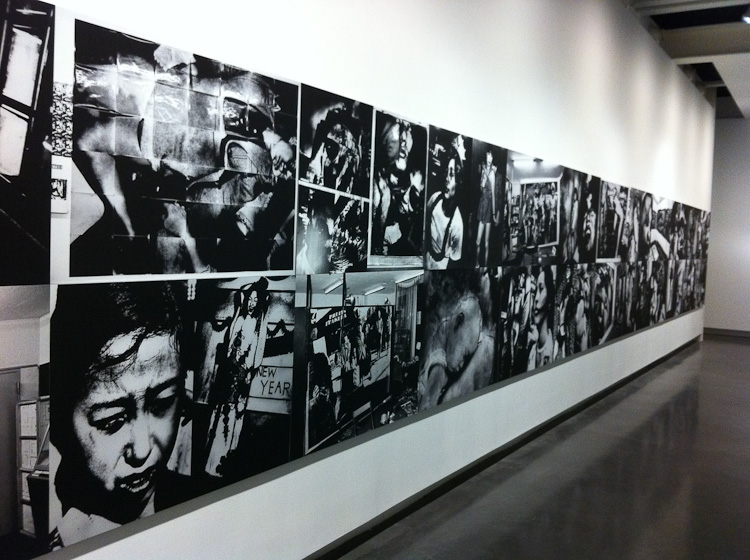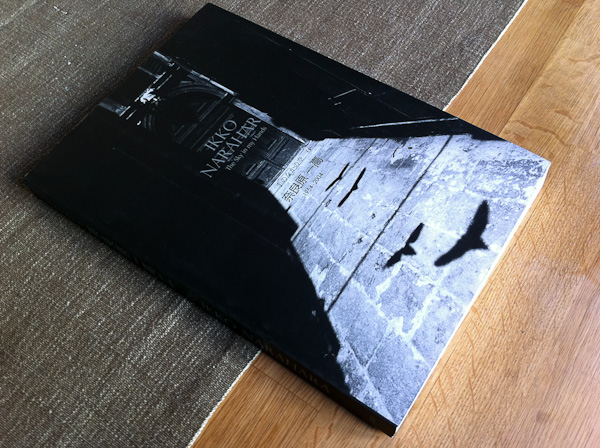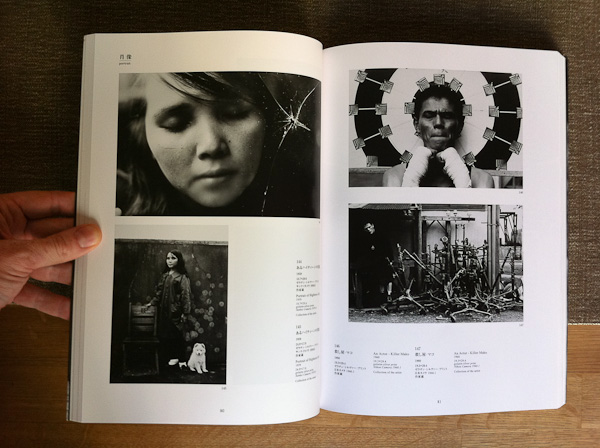 Le Bal's Japanese summer season continues this week with the opening of the exhibition Tokyo-e, which brings together work by Yutaka Takanashi and Keizo Kitajima with a series by an almost complete unknown photographer, Yukichi Watabe, a photojournalist who worked in Tokyo. The three groups of work on show are very different, related only through their strong connection to the Japanese capital. Although this selection seems a little arbitrary (as is almost inevitably the case with city-based shows), Tokyo-e is a rare opportunity to see an exhibition that goes beyond the ever-popular Moriyama, Araki or anything-from-Provoke choices. Tokyo-e only opens officially tomorrow, but here's a little sneak preview to whet the appetite.
Le Bal's Japanese summer season continues this week with the opening of the exhibition Tokyo-e, which brings together work by Yutaka Takanashi and Keizo Kitajima with a series by an almost complete unknown photographer, Yukichi Watabe, a photojournalist who worked in Tokyo. The three groups of work on show are very different, related only through their strong connection to the Japanese capital. Although this selection seems a little arbitrary (as is almost inevitably the case with city-based shows), Tokyo-e is a rare opportunity to see an exhibition that goes beyond the ever-popular Moriyama, Araki or anything-from-Provoke choices. Tokyo-e only opens officially tomorrow, but here's a little sneak preview to whet the appetite.
Kitajima gets the lion's share of the exhibition space with the entire downstairs floor including work spanning 15 years of his career, from his 1970s series in Tokyo and Okinawa to his work from the 1980s taken in New York, Eastern Europe, Berlin, Seoul and Beijing. The most striking feature of the Kitajima room has to be the Photo Express Tokyo grid, a band of photographs covering an entire wall. The installation is a nod to the 1970s Camp gallery where Kitajima covered the walls, floor and ceiling of this tiny Shinjuku space with his prints. In conjunction with this show, Le Bal and Steidl are releasing a facsimile of the full set of 12 Photo Express Tokyo booklets that Kitajima made in 1979 at the rate of one issue per week throughout the 12-week run of the exhibition.
Although Kitajima's work features most prominently, I found the upstairs room to be the more successful half of the show. The combination of Takanashi's Machi, a series of opulent, colour-drenched shopfronts and interiors from Tokyo's Shitamachi district, with a clever installation of Watabe's small 'film noir' vignettes creates the sense of wandering through the streets of a city from the past. The Watabe criminal investigation series is a wonderful anomaly. Shot in 1958, these photographs document a criminal investigation by the Tokyo police of a horrific murder by a suspected serial killer. In a radical departure from the straightforward 'objective' documentation that was so prevalent at the time, Watabe's photographs could be a set of film stills given how heavily they seem to be influenced by film noir, an effect which is compounded by the charismatic lead investigator, a kind of Japanese Humphrey Bogart figure. While they are different in every aspect, the installation of the two series ties them together nicely: the size of the Takanashi prints almost make it possible to walk into these city spaces, which have now all but faded away, while the labyrinthine installation of Watabe's small prints, which visitors look down on from above, echoes the detective's experience of searching for clues.
With an artist talk by Kitajima tomorrow (Friday 20 May) evening, one by Takanashi on Sunday (22 May), a film programme and a bunch of other events to come, Tokyo-e comes complete with some terrific bonus features and is definitely worth the visit.
Tokyo-e (Yutaka Takanashi, Keizo Kitajima & Yukichi Watabe), Le Bal 20 May - 21 August 2011
Rating: Recommended





















